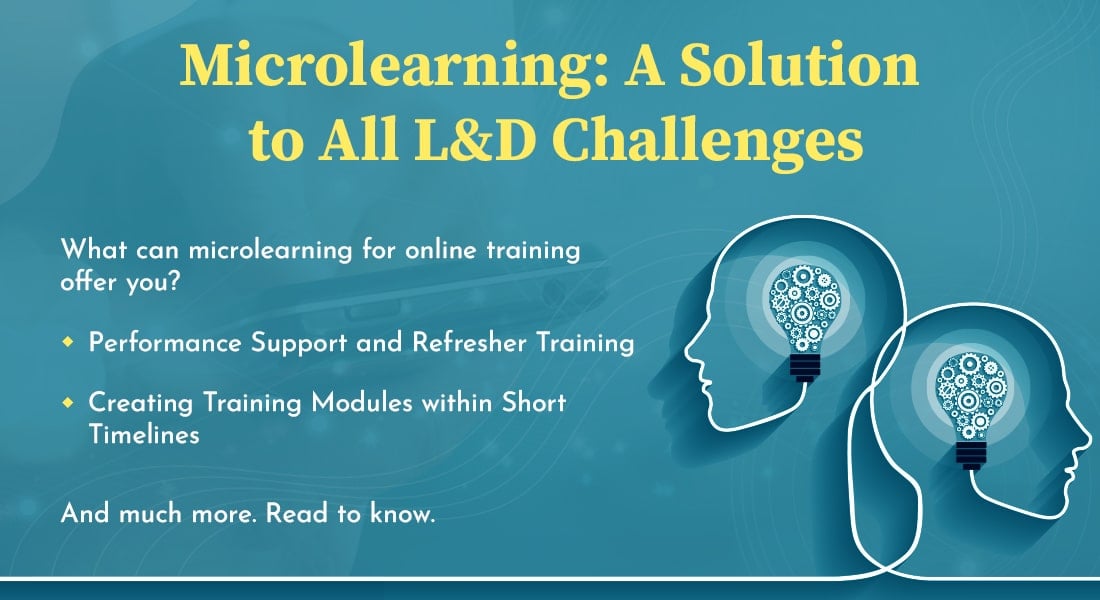Understanding Microlearning – What it is and What it Isn’t [Video]
![Understanding Microlearning – What it is and What it Isn’t [Video] Understanding Microlearning – What it is and What it Isn’t [Video]](https://blog.commlabindia.com/hubfs/Imported_Blog_Media/microlearning-what-it-is-webinar-video.jpg)
In a fast-moving world of learners with packed schedules, dwindling attention spans, never-ending to-do lists, blurring boundaries between home & work, and a ton of distractions, what can be a better way to approach learning? Well, microlearning is your answer!
Join this webinar to understand what microlearning really is. It is not just video!
What is Microlearning?
Microlearning offers small nuggets of content, each of which focuses on a single learning objective. Each learning unit can be completed by a learner in about 5 to 10 minutes and in one go, achieving the intended learning objective. Microlearning modules can include a variety of formats such as blogs, videos, GIFs, quizzes, animations, infographics, and interactive PDFs.
How Does Microlearning Differ from Traditional Classroom Training?
Classroom training can cover several learning objectives whereas each microlearning module focuses on one specific objective.
Microlearning modules, unlike classroom training, can be taken multiple times and also be used as is for other purposes such as a refresher course for experts or an introductory course for beginners in a subject.
Microlearning doesn’t have as much scope for personal interaction as classroom training. However, it’s meant to be action-oriented and helps learners learn quickly and also practice and apply what they are learning. Microlearning assets can be used standalone or to complement classroom training and eLearning courses.
Advantages of Microlearning for Corporate Training
Time
Microlearning is short learning nuggets that do not take up much time of employees, nor do they take them away from their work for long. It can fit in busy schedules and enables seamless learning on the job.
Accessibility
Microlearning modules can be accessed anytime and anywhere making it easy to learn. Microlearning assets are mobile-friendly, and learners can learn on their smartphones or tablets. One can access them and learn in their spare time, or while traveling or waiting for an appointment.
Engagement
As micro courses are small and take very little time to complete, they engage learners from the beginning to the end. These modules have high completion rates which in turn provide a sense of accomplishment that encourages one to learn more.
Summing it Up
Microlearning fits well across blended learning and is a versatile tool given its many formats. Games and quizzes can be used to check recall periodically while how-to videos and infographics can offer performance support. Microlearning modules can be used to train learners – one learning objective at a time.
However, despite its popularity, microlearning is shrouded in mystery and has many misconceptions hindering its adoption. If you have the same questions, join the webinar on August 19, 11 AM EDT for a reality check of microlearning.





